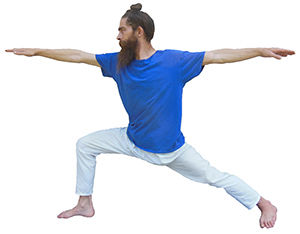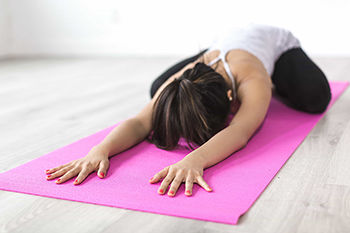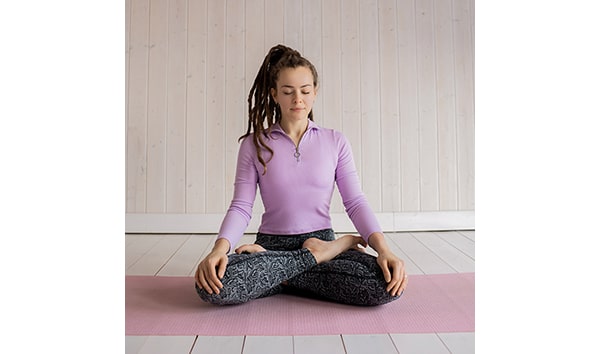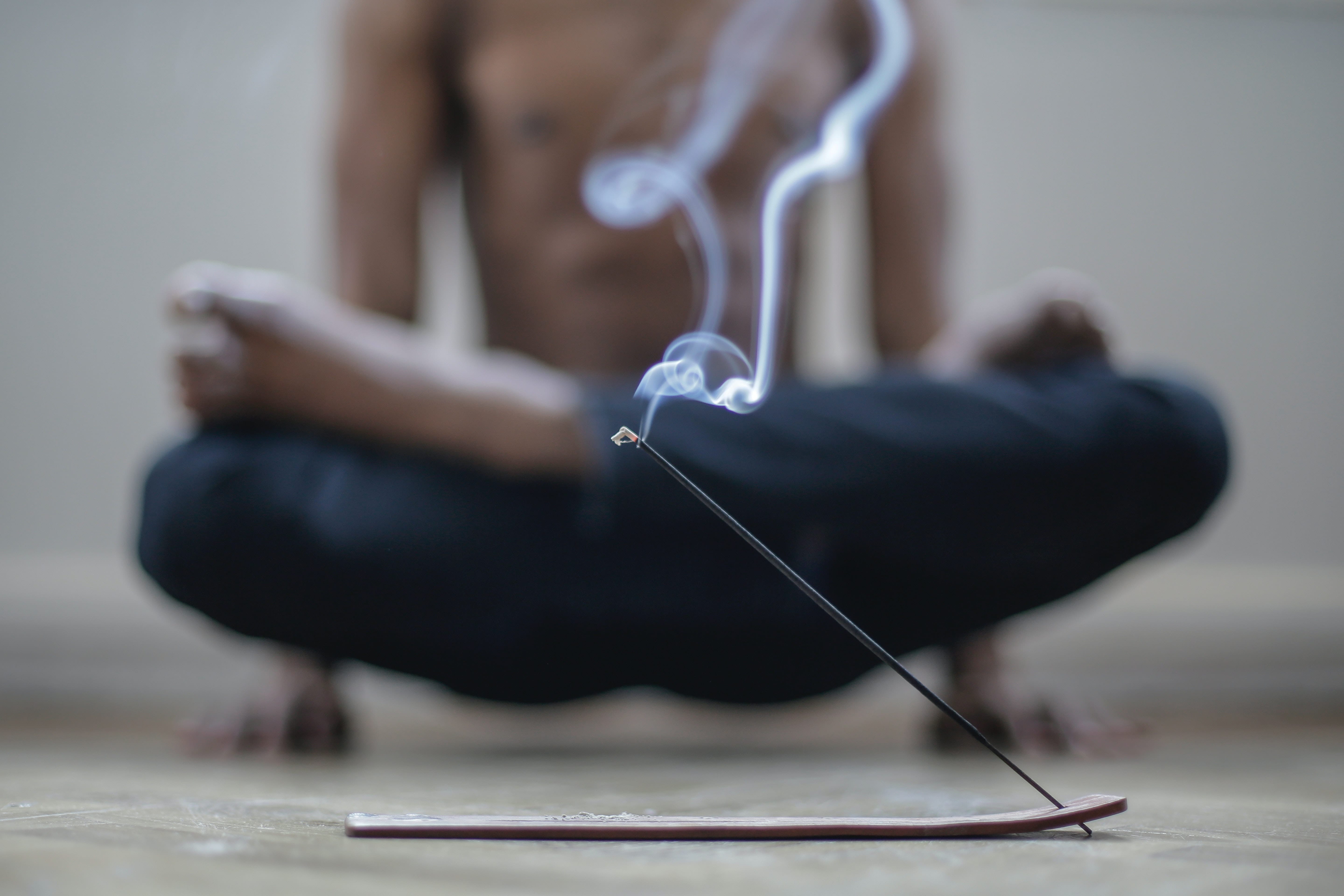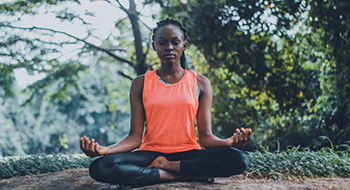Practice
Preform Tadasana or mountain pose.
Step forward with the right foot about four feet.
Make sure the heal of the right foot is in line with the arch of the left foot.
The left foot is about 30 degrees to the left of the body.
Inhale turning the torso inline with the hips.
Exhale bending the right knee, bringing the right leg into a right angle while making sure that the right knee does not pass the right foot. If so then walk the right foot forward.
Simultaneously lift the arms in line with the shoulders.
Look at the right hand.
Exhale lower the arms down to the sides of the body while straightening the right leg.
Turn to the left while adjusting the feet to preform the left side.
